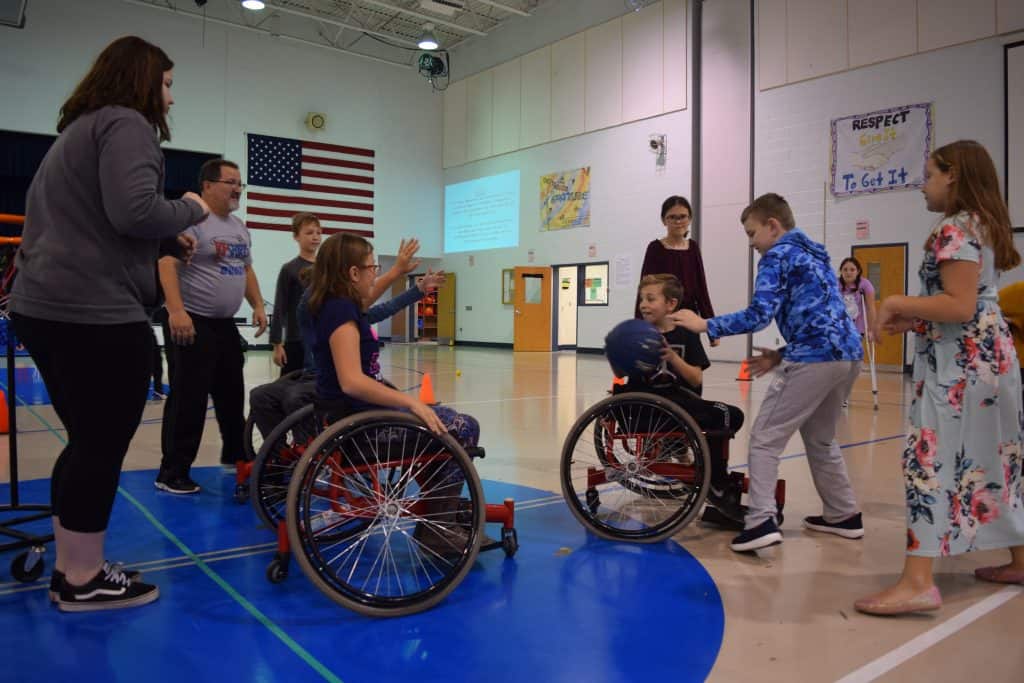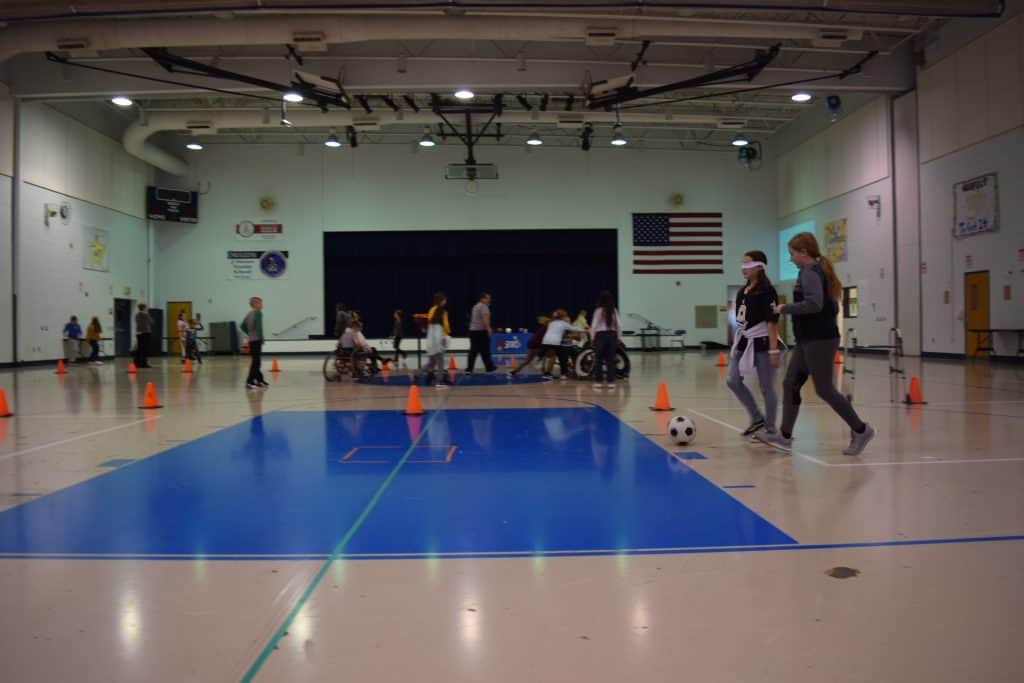

Last week, students at J. Mason Tomlin Elementary School were able to experience what it is like to live with different disabilities and special needs.
For three days, students grades four to six participated in activities ranging from wheelchair basketball and visually impaired soccer as part of Abilities Awareness Day, a district initiative to foster an “environment of kindness, compassion, respect and acceptance for everyone” in the community.
“The whole point is to have them experience, in a real way, what it is like to be someone with a disability,” Stephanie Logan, district director of special services, said.
Not only is the goal to get students in someone else’s shoes, but to allow students to see the many strengths they might not come across on a daily basis, according to Logan.

It is the second year the district began the initiative. Last year, it held the event at JMT and Centre City schools.
New this year, the district partnered with TOPSports to focus on a sports perspective and to join with a local program dedicated to inclusion.
TOPSports, based in Harrison Township, is a nonprofit organization that provides a place for children with special needs to play organized sports.
“What I hope they learn more than anything is that inclusion is so easy,” said Troy Memis, founder of the organization, who volunteered his time to set up the event. “This (event) makes those kids with special needs more approachable.”
The event was divided into four stations – basketball, baseball, soccer and math. Each station replicated what it is like for a student with a specific disability or special need.
In the wheelchair basketball station, students shared their time playing in a wheelchair.
“They see the challenge,” said Memis. “They see how hard it is and they learn to be more understanding.”
The math station took students into a room with loud music while being tasked with math problems. According to Logan, the activity allows children to experience what it is like for a student with Autism to answer simple math questions when over-stimulated.
Many of the students shared that the Autism station was the most difficult.
Students were asked to reflect on their experiences during the day with follow-up discussion prompts.
“We don’t only want to make this about school, we make this about their whole community,” said Logan. “We try to make that connection for them inside and outside of school.”


